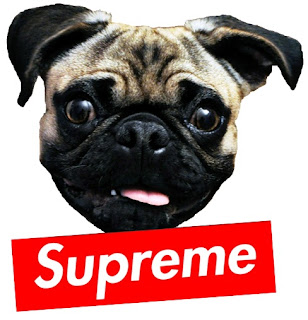Non-natural Lighting (Lots of flash)
Natural Lighting (little or no flash):
"Some people look at a picture, and if there's some energy and there's some sexiness or something they like about it, it appeals to them... it's an energy people respond to... And I think that's more on a human level." 1 Born on August 14, 1965, in New York City, Terry Richardson became a son to Bob Richardson, a fashion photographer who struggled with schizophrenia and drug abuse. Terry was shy as a teenager and at times deemed "completely lacking in social skills". What he did not know, was that he was soon to become one of the largest fashion and celebrity photographers of the 21st generation, as well as an extremely weird, perverted, yet genius and creative individual. Terry is able to capture the truth behind the person; the raw, candid,real emotions and self of every human he photographs through different types of lighting, simple background and a few props, and rare/raw moments.
Lighting definitely comes into play when illuminating specific emotions in his photographs. In Terry's "extreme flash" photographs, Terry captures every detail and imperfection of his subject, creating a sense of rawness and free-spirit. Terry's photographs almost shine and have a glossiness and crispness to them, that could make almost any picture marketable. In Terry's more toned-down lighting photographs, there is a more relaxed, softness through his models. Although there is less brightness and spunkiness in his "non-flash" photographs, he still emulates a side of his models/subjects that he wants to portray. Terry's bright lighting adds an extra spunk and "pazazz" representing the playful and child-like side to his models, while his dimmer lighting adds more softness breaking through the inner-core to the raw, real emotions of his subjects.
Along with the lighting illuminating his models "core", Terry uses simple backgrounds and few props when photographing his subjects. Again, by using only simple elements, Terry is able to keep the focus on his subject and not other elements such as props or lighting, or scenery (Terry usually photographs subjects with huge personalities anyways; he will not photograph them if he finds them boring). "I know there's the whole thing of putting objects in this really rich, expensive, fancy looking setting, or lighting or whatever, but I think stuff like that, unless it's done really well, just looks old fashion and kind of boring, you know?" 1 By keeping things more "real" and using props you would see in your every-day life (not a snake wrapped around his models neck, or lion roaring in the background), his photographs become more personal, and relate able to the viewer.
Terry also has the natural capability to find the rare and raw moments of his subjects. Under the constant lime-light of the celebrity world, Terry discusses how people made fun of him for only having a simple point and shoot camera, questioning, "Where is all your equipment?". In Terry's defense, he does not need complicated and high-technology equipment to get the shot he wants. He has the ability to use whatever is given to him and create a masterpiece. By using music and just "hanging out" as the objective with his subjects, Terry gets his models to loosen up and express themselves. As well, due to Terry's nerdy and some-what pedophile looks, most of his models do not find him intimidating and feel comfortable enough to shred their outter layers and give him their inner self in front of the camera.
Overall, Terry creates an inspiration to all first-time photographers; with just a simple understanding of lighting and how it portrays a specific emotion or story, understanding the use of simplicity, and being able to dig deep into those "rare" moments, anyone can be just as provocative and suggestive as Terry Richardson.
1 Terry Richardson, "Terry Richardson on the Snapshot", http://www.youtube.com/watch?v=YzysNP48xLk
(Btw, sorry for all the examples of his pictures... there's just too many to choose from. Take a look for yourself on Terry's tumblr/blog/main website/portfolio/. You'll see what I mean by his provocative element... there's a lot of nudity. (He has a real website, but it's just boring and doesn't display the goods.)
(All photos of Jill were taken with a Nikon 3100, with a 35-55mm lens. The first picture has an aperture of f/4.2 and a shutter speed of 1/250. The second picture has an aperture of f/4.2 and a shutter speed of 1/500. The third picture has an aperture of f/4.5 and a shutter speed of 1/80.)




















